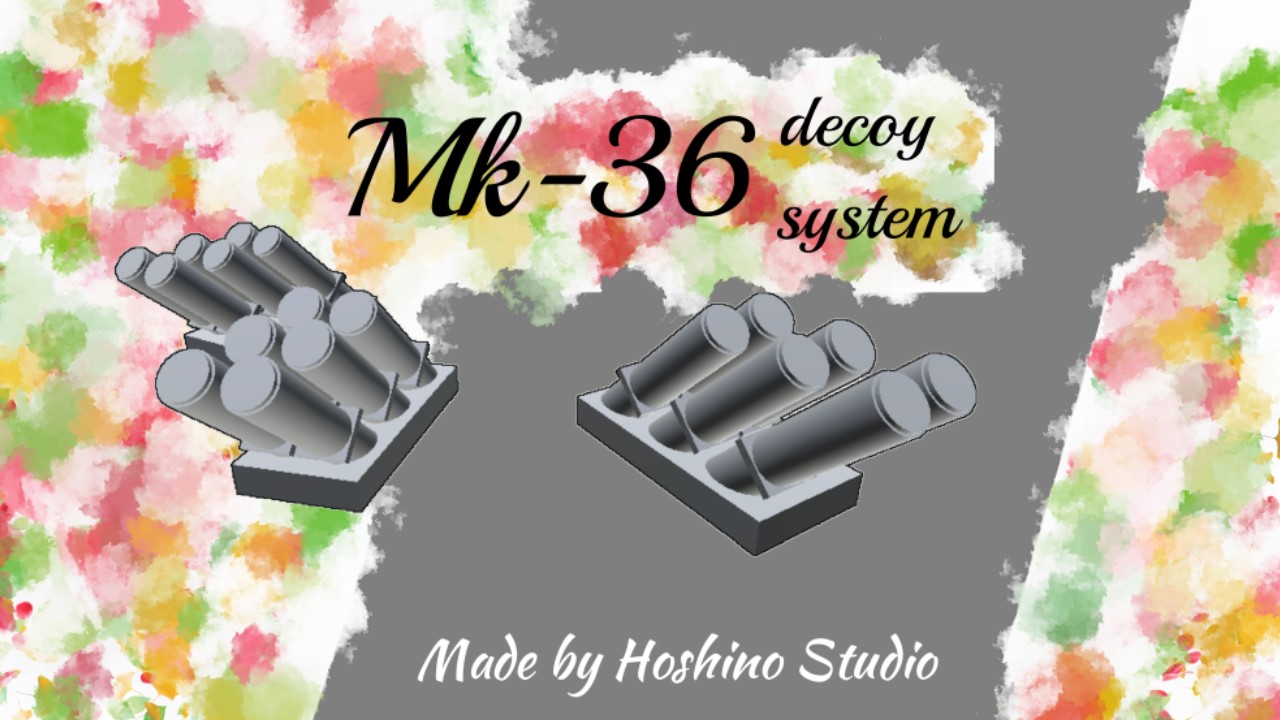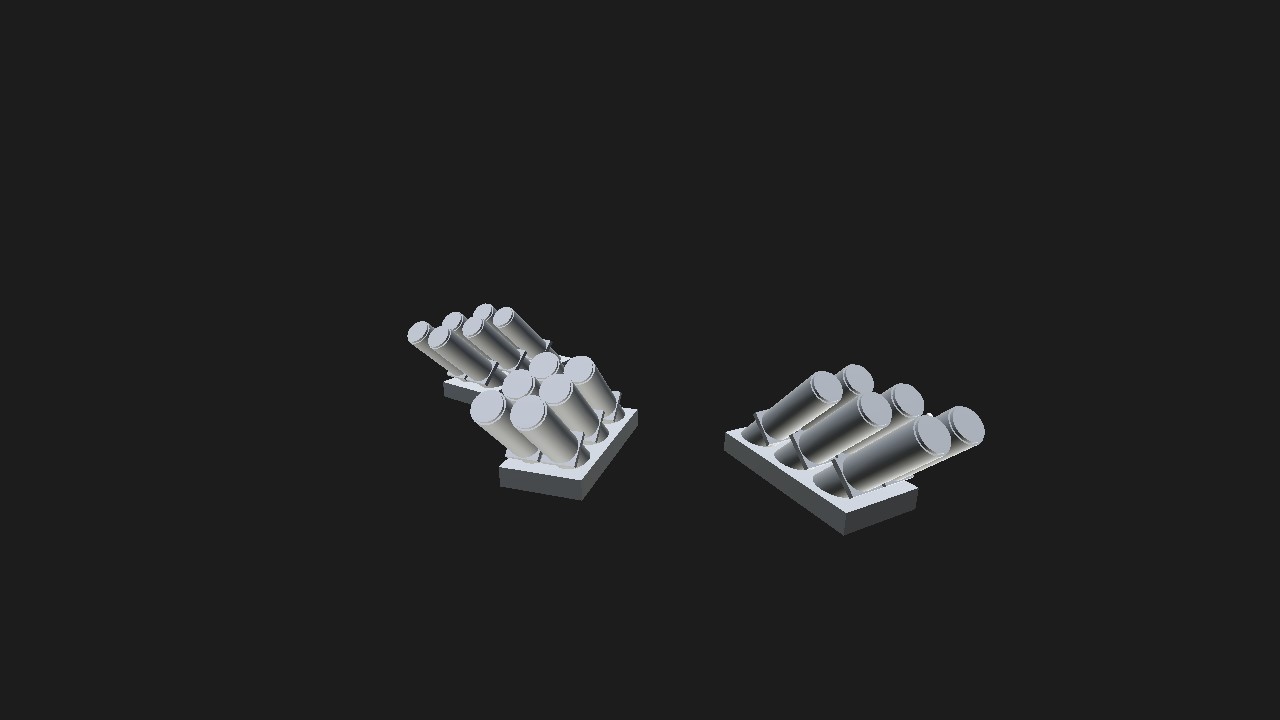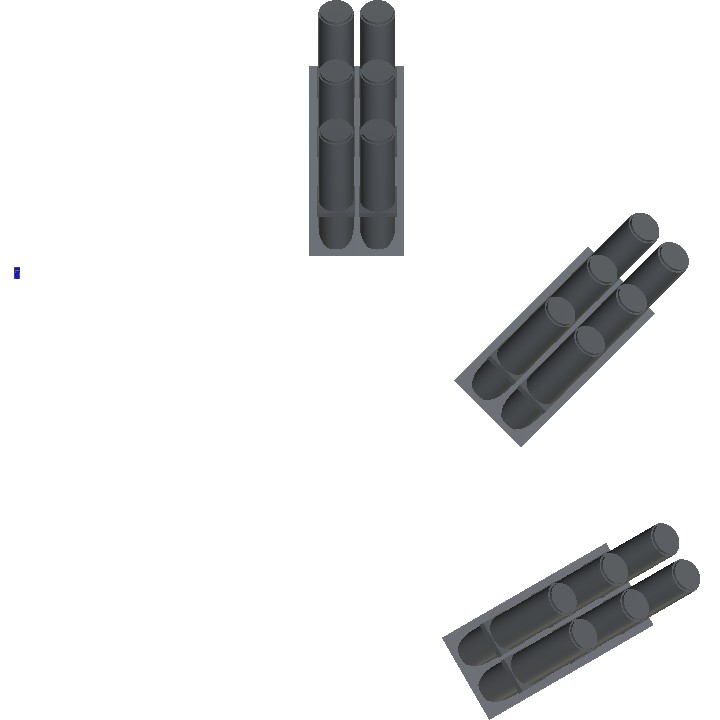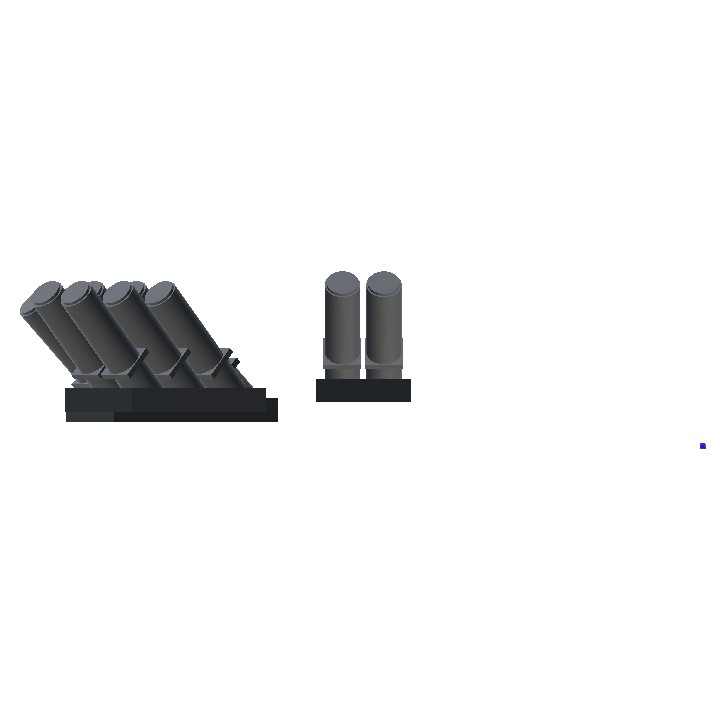origin
In the 1960s, the U.S. Navy used chafroc as its carrier decoy. The main missile type was mk-76 metal interference wire rocket, which was refitted from the air Zuni five inch air launched rocket. Chaffroc is mainly operated in the mode of disruption. It is launched before the enemy launches anti-ship missiles or the enemy's anti-ship missiles are locked, forming several false targets in the air. When the enemy's anti-ship missile radar seeker is turned on, several targets will be detected immediately, and then confused. If the enemy anti-ship missile radar seeker has been locked before the deployment of chafproc decoys, the U.S. Navy ships will first use the active electronic jamming system (ulq-6 at that time) to interfere with the enemy anti-ship missile, force it to unlock and search again. At this time, the enemy anti-ship missile has a great chance to lock the jamming wire with a much larger radar cross-sectional area. The problem with this mode is that if the enemy anti-ship missiles are locked and are only found approaching, the ship probably has no time to launch decoys and use electronic jamming to unlock the enemy anti-ship missiles In addition, in order to reduce the probability of being confused, the seeker of anti-ship missile radar will enable the lock (angle, distance) function after locking the main target, only tracking the range near the main target, while the traditional decoy similar to chafproc will fly for a period of time before detonating and spreading aluminum foil, which is far away from the ship itself, and may not be able to maintain the search of anti-ship missile Within the lock range of the marker.
For this reason, the U.S. Navy needs a new decoy, which can quickly deploy aluminum foil after launch, and launch a large radar cross-section metal interference wire cloud in the shortest time, directly inducing enemy missiles to lock in the wrong target As the aluminum foil is distributed not far from the ship, there is a great chance that it will fall within the lock range of the incoming missile, making it lock the interference wire cloud wrongly, while the launching ship will take this time to leave its original position. This is the origin of the rapid dispersion off chaff system (RBOC).

MK-33 RBOC/MK-34 RBOC II
Mk-33 RBOC decoy system was developed by hycor Inc. of the United States. In 1972, it first produced 11 sets and delivered them to the U.S. Navy for use in Vietnam battlefield. In 1974, it was finalized. The whole system includes:
Mk-135 six unit transmitter launching: fixed six tubes are used, which are divided into front and back three groups in parallel, pointing to 55 degrees, 65 degrees and 75 degrees respectively. The ignition circuit adopts electromagnetic trigger fuse, with the inner diameter of the launching tube of 114mm and length 355.7mm ?
Mk160-0 power supply, with backup battery and continuous charger.
Mk-158 main display console, the control and display part of the system, controls the launch and displays the status of the launch tube.
Mk-164 mod 0 bridge console.
MK-4 mod0 pre-set reload containers (ready service lockers), each box can hold 18 jamming ammunition.
The types of bombs used in mk-33 and mk-34 include:
1.MK -Model 171 metal jamming wire jammer, known as chaff star, is mainly used to jam wideband radar signals, with a length of 412.1mm , diameter 11.23mm , bullet weight 4.7kg , effective load preparation 1.68kg ? This jamming bomb has no power. After launching, it will detonate in the air and scatter aluminum foil jamming wires. After detonating, it will Eight point five A radar reflection area of more than 1000 square meters is formed in seconds, and it can stay in the air for up to 20 minutes. Usually, as long as one mk-171 is launched, it can cover small ships, while large ships need to launch several to hide.
2.HIRAM Hot flame bomb: its size is roughly the same as mk-171, and its weight is 3.2kg After ignition, the infrared heat source output is 3-5 µ m wavelength, and the radiation intensity is greater than or equal to 1000W / cubic angle. The rated decoy effect can be achieved within 6 seconds after ignition, and the duration of action in the air is 40 seconds.
3. Gemini dual purpose jammer, including aluminum foil jamming wire and heat burning material, is used to deal with missiles equipped with integrated radar / infrared seeker. Its bullet length is 451mm, and its bullet weight is 4.08kg , interference wire weight of aluminum foil loaded in the bomb 1.35kg , the jamming radar frequency range is 7-18ghz, which is less than Eight point five The radar reflection area of 1000 square meters is made in seconds; the formation time to infrared heat source is 6 seconds, the effective action time is 45 seconds, and the output frequency band is 3-5 microns.

MK-34 RBOC II
Mk-34 is the first improved RBOC, known as RBOC II, which came out in the 1970s. Compared with mk-33, mk-34 has two main improvements. First, the back-end launch control is changed to the computer, which can be integrated with the ship's electronic support system; when the electronic support device intercepts the enemy's radar signal, it will automatically control the transmitter to throw bait. The second is to improve the development and installation device to use longer launch tubes, which can use longer and larger ammunition, mainly including the following three types:
1. Mk-182 ultra thin metal interference wire bomb: also known as chaffstar II, the bomb is 122.2cm long, and the aluminum foil interference wire is relatively thin, so the effective carrying capacity is four times of mk-171, and it has better dispersion technology, and the radar reflection area manufactured is twice of mk-171.
2. Super Loroc long-range metal interference wire bomb: add rocket propulsion section to extend the range, and the effective range is 1-4km.
3. Hiram II infrared thermal flare.

MK-36 SRBOC
In the late 1970s, the mk-34 RBOC II was further improved and launched, known as the mk-36 super rapid dispersion off chaff system (srboc), which was integrated with the onboard mk-32 EW system. Mk-36 uses the updated mk-137 six unit transmitter with a diameter of 130mm. The six launch tubes are arranged in pairs, front and back, but the angles of the six tubes are the same (there are two derivative types of 45 degree and 60 degree). Each mk-137 is equipped with a mk-160 power supply, and each launch tube is equipped with built-in battery, bridge remote control controller, standard launch controller and other equipment.
The types of bombs used by srboc are as follows:
1. Mk-182 ultra thin metal interference wire bullet.
2. Super Loroc long-range metal interference wire bomb: add rocket propulsion section to extend the range, and the effective range is 1-4km.
3. Hiram II / III / IV infrared thermal flare.
4. Super Gemini infrared / interference wire hybrid decoy.
The subsystem of mk-36 srboc includes mk-137 six unit transmitter, the main display console is set as mk-158 (mod1, 2), and then the ready service locks (rsls) evolve into mk-5 / 4mod2 or mk-6mod0. The whole system can be configured with up to 10 mk-137 six unit transmitters, and the whole engagement process can be automatically controlled by mk-32 EW system. In addition to metal jamming bombs and infrared thermal flares, mk-36 can also launch a consumable acoustic counter bait to counter the incoming torpedo.
In addition, passive decoy systems group, a division of Lockheed Martin siplican, launched the automated launch of extensions system (Alex) to replace mk-36 The srboc system is connected with various electronic interception (ESM), navigation system,navigation and wind direction sensing devices on the ship to operate automatically. According to these enemy target information, ship dynamic and atmospheric information, the srboc system can work out the operation mode and shooting parameters to engage simultaneously. The whole system can operate in automatic, semi-automatic or manual operation mode, and the manual mode can be selected differently from the automatic mode The mode of operation generated by the.
After a long time of use, mk-36 has been proved to be quite effective, reliable and cheap, and has been adopted in at least 20 countries. Mk-36 mod1 is equipped with two mk-137 six unit transmitters, and mk-36 mod2 is equipped with four mk-137.
In 1991, the U.S. Navy modified the ACD MK-2 mod1 anti torpedo acoustic decoy of the submarine to become the launched expendable acoustic device (lead) of the ship, which can be put into water by srboc launcher, mk-15 anti submarine mortar or human.
In addition, the U.S. Navy also uses the nulka active decoy (U.S. No. mk-53) derived from the mk-137 transmitter and cooperated with the U.S. and Australia. Among them, the version with only one dual nulka independent launch box is called mk-137 mod10, while the version with additional nulka dual transmitter directly behind the original six unit mk-137 mod4 transmitter is called mk-137 MOD7. However, in the end, the U.S. Navy decided to independently set up the launch systems of nulka and srboc decoys, so the actual deployment was mk-137 mod10.
Specifications
Spotlights
- RussianAce 5.6 years ago
- Typhoon03 5.6 years ago
General Characteristics
- Created On Android
- Wingspan 11.9ft (3.6m)
- Length 12.4ft (3.8m)
- Height 3.1ft (0.9m)
- Empty Weight 551lbs (250kg)
- Loaded Weight 551lbs (250kg)
Performance
- Wing Loading 439,839.3lbs/ft2 (2,147,483.6kg/m2)
- Wing Area 0.0ft2 (0.0m2)
- Drag Points 2
Parts
- Number of Parts 1
- Control Surfaces 0
- Performance Cost 292






@Unknownguy1210 okay I had a stroke
Sorry what is a decoy does it fire????????
Agreed
Damn these look good! I hope to see them on some ships soon